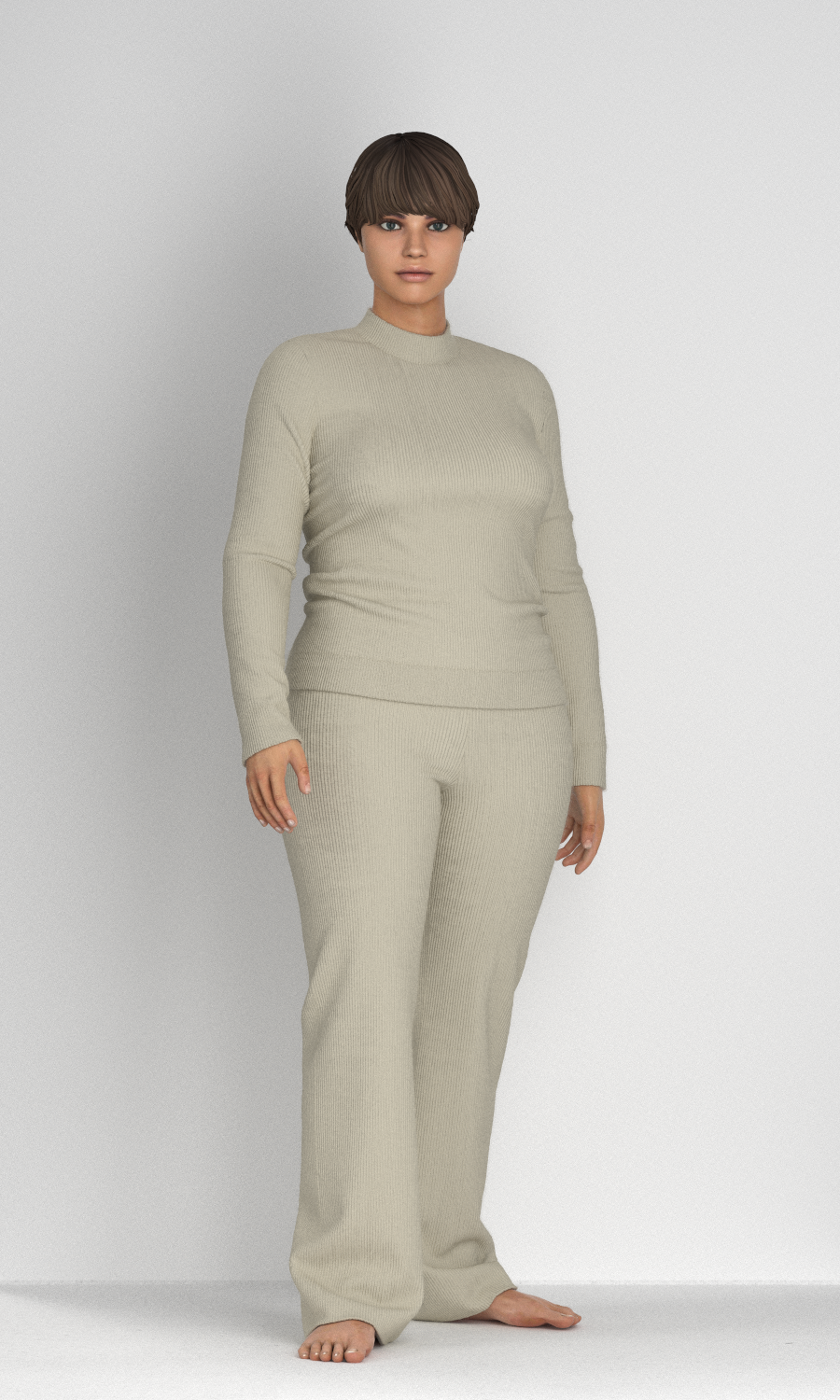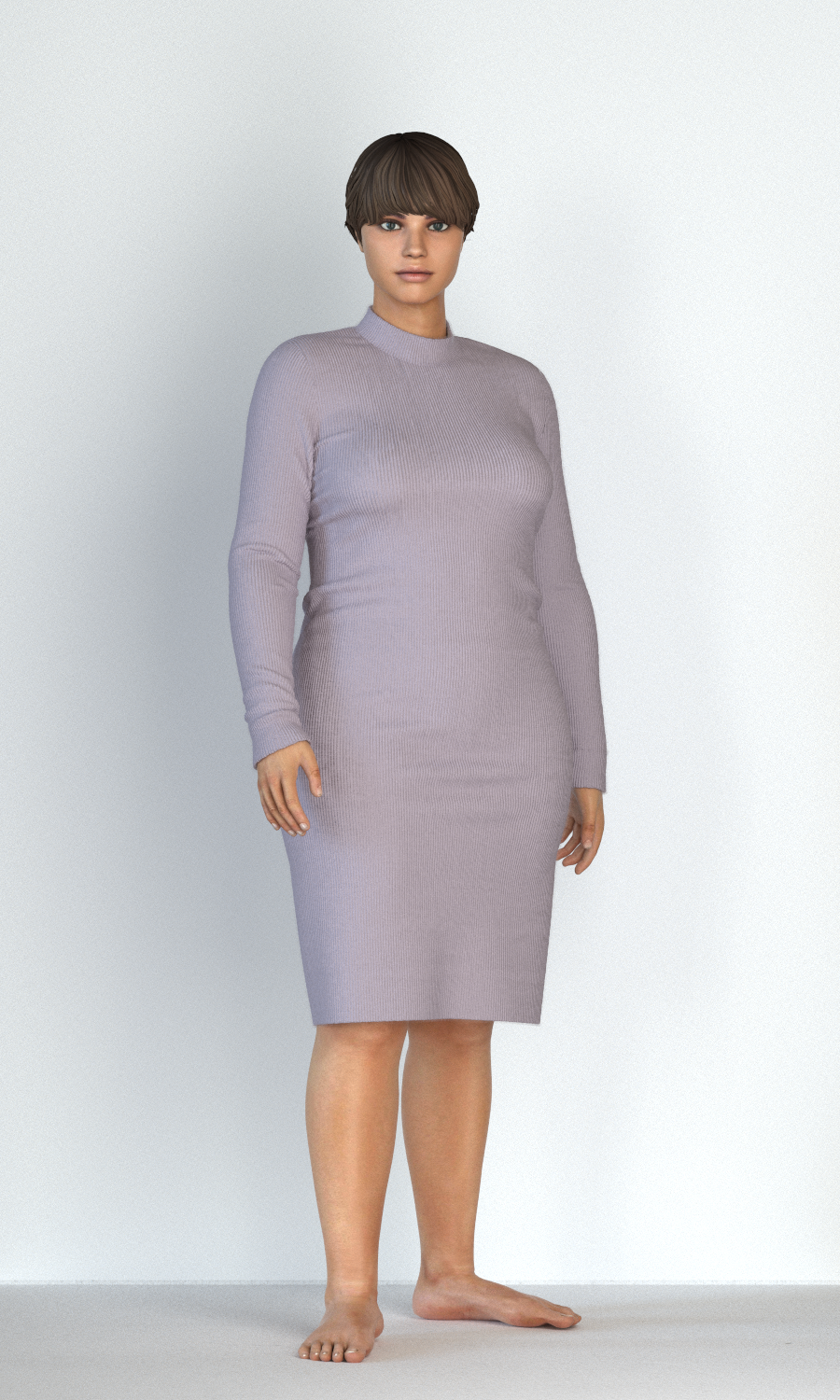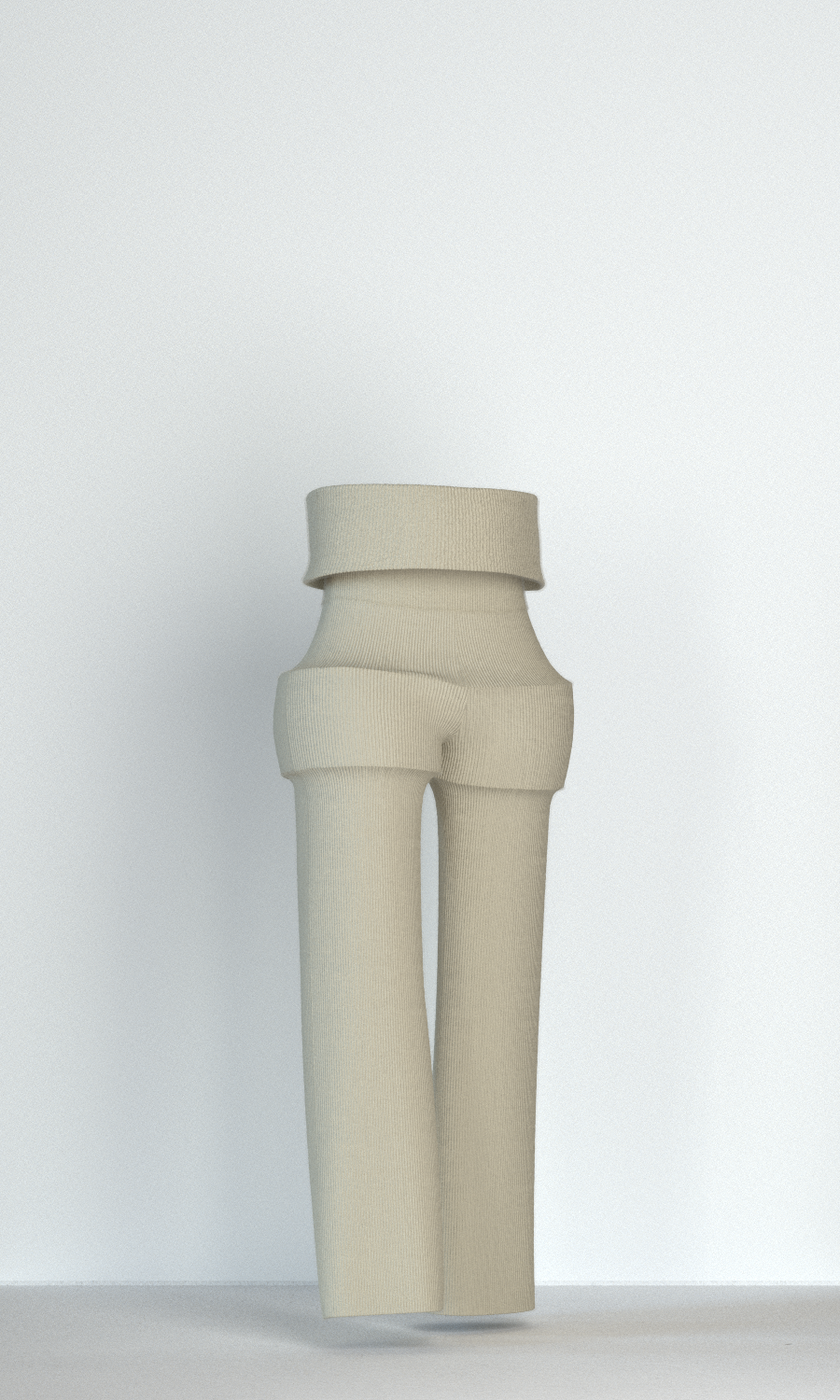All about Eva: Fusing tech and craft with avatars
Avatars are set to revolutionize the fashion industry with minimized waste and an inclusive approach. TUBU worked with digital prototyping agency The Hapticians to create a truly unique being — EVA.

EVA (she/her/they/them) is a being of light.
But although she is not real, she is an entity that should be respected. The knitted ribbed garments she is wearing are also not real. Yet.
They are, however, a digital imprint of the actual perennial garments TUBU is set to produce on-demand.
EVA is named after the robot in Wall-E (Eve is the proper name, but Wall-E pronounces it Eva, which is quite adorable). Wall-E happens to be one of our favorite animated movies, set in a dystopian future landscape where Earth has been filled with too much stuff. In our current world, we purchase way too many clothes that inevitably end up as waste — and have lost touch with ourselves and our bodies.
But there is still so much hope.

On Designing “with”
Here at TUBU, we work with an inclusive design mindset. Inclusive design means that you try to include as many individuals as possible in your world-building as a designer. You can call this designing “with”.
In 2021, we were one of 8 out of 78 applicants that received funding from Design and Architecture Norway (DOGA) for Inclusive Design. We strive to create apparel that can expand and subtract with you — as you experience all seasons of life.
And for that, we use a handy toolset, namely — avatars. To prototype our garments, TUBU worked with digital prototyping agency The Hapticians to create a truly unique being — EVA.
EVA is made by designer Mari Jæger and is a European fit-size 44/46. She would be classified as “plus-size” by most brands, but we don’t like that wording. It indicates that we have some people who counts as «normal», i.e. the individuals that fit into the standardized fashion system between XS and XL (very derogatory semantics) — and some people who are beyond normal. In the US so-called “plus-size” people make up 67 % (!) of the population identifying as female*.
Isn’t it bizarre that the majority of this group doesn’t fit into a standardized sizing system? Yes. That’s why we believe that there are inherent flaws in the system itself, and that we need to think of other ways systems, with new inclusive and poetic semantics.
Please read more about our approach to shapes, and not sizes — here.

MetaEthics & Digital twins
We believe avatars are set to revolutionize the fashion industry. But when you are literally building human beings (albeit metaphysical) you need to have an ethical mindset and a key consideration of race, shape, ability and gender representation.
TUBU are not interested in creating NFT’s, but instead use avatars to decrease the footprint of production. With the use of avatars apparel producers can create digital prototypes (also known as digital twins) and test these garments on multiple different bodies. This will in turn minimize waste in pre-production.
The benefits of avatars from an inclusive design standpoint are massive. This is mainly due to the gaming industry and the vast technological progress that’s been made within this field, especially with platforms such as Unreal Engines and their MetaHumans.
Companies like BODS have already made great progress here, especially with 3D-scanning (to optimize sizing for producers using standardized sizes). We are yet to see how the avatar technology can ble implemented and used in full, but there is no doubt that this is coming — with full force.
For now, our avatar EVA will work as an optical aid for TUBU — showing how our garments can fit on a body that many individuals will find looking more familiar than the ones we are used to seeing in a store front window.
She is a being of light.
*Hudson, K. and Hwang, C., 2020. Application of 3D Prototyping to Promote Size-Inclusive Design Practices for Plus-Size Apparel. Fashion Practice, pp.1-21.